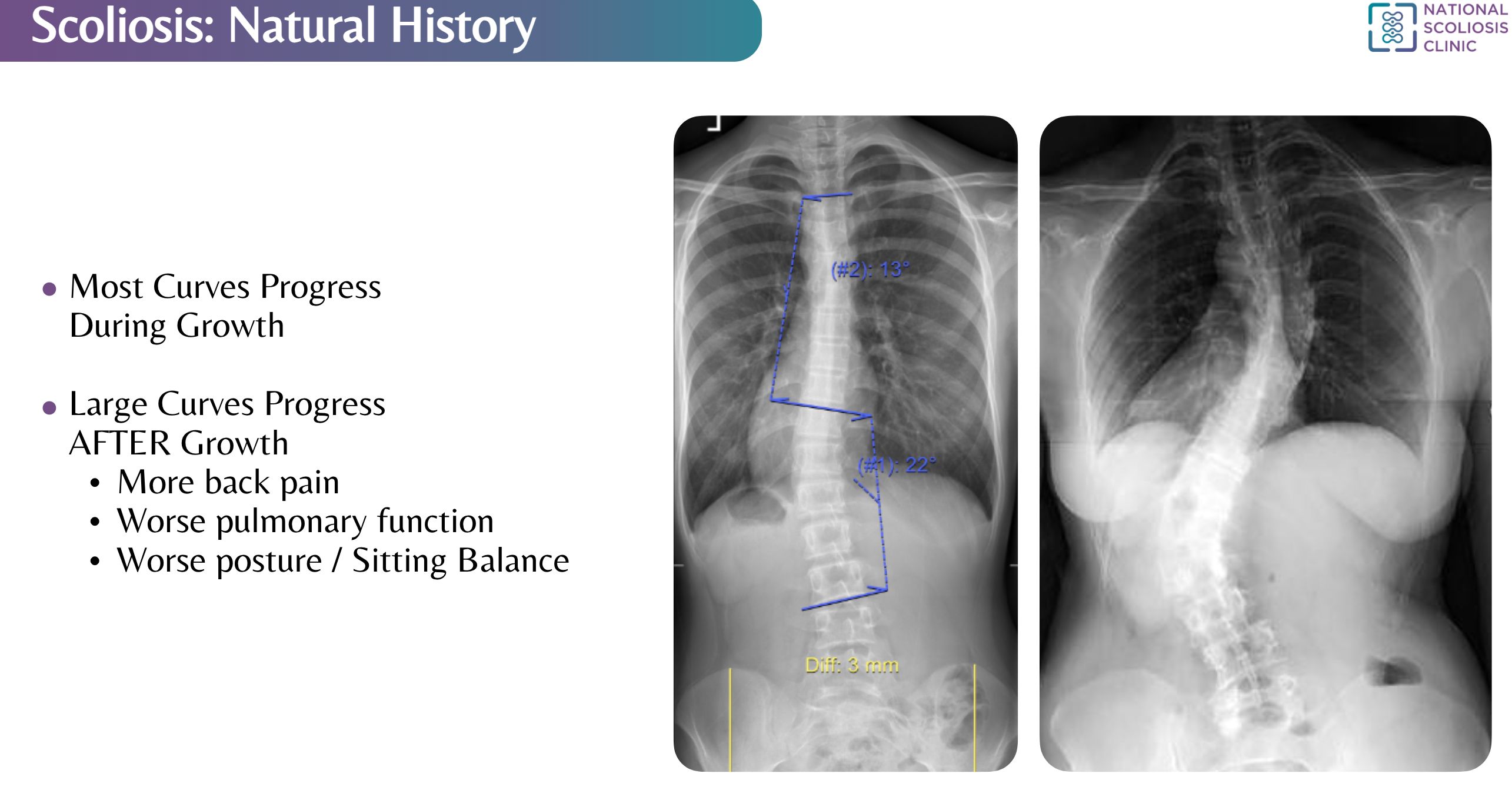A healthy human spine is relatively straight when viewed from behind and has a natural S-curve when viewed from the side. A spine with scoliosis bends, rotates, and may twist from that shape. In severe cases this can cause difficulty standing, walking, and breathing.
Scoliosis Types
Idiopathic Scoliosis
This is the most common form of scoliosis. “Idiopathic” means that the disease has no identified cause, and these account for about 80% of all pediatric scoliosis cases. Family history and genetics may be risk factors.
Adolescent idiopathic scoliosis (AIS) is traditionally defined as a lateral curvature of the spine of 10° or more in persons aged 10 to 18 years that is not a result of an underlying condition and occurs most commonly in females.
The National Scoliosis Clinic specializes in the treatment of AIS.
Degenerative Scoliosis
As people age their spinal discs can degenerate unevenly (or asymmetrically) which can cause the spine to increasingly bend and distort as this degeneration worsens.
Neuromuscular Scoliosis
This form of scoliosis is caused by nerve and muscular conditions including cerebral palsy, muscular dystrophy, and Angelman syndrome. These conditions (except for certain forms of muscular dystrophy) are often diagnosed early in life.
Risk Factors of Scoliosis
- Age
- Signs and symptoms of scoliosis typically begin in adolescence (aged 10-18).
- Sex
- Girls have a much higher risk of developing severe scoliosis than boys however both develop mild cases of scoliosis at similar rates
- Family history
- Scoliosis can be hereditary and there is an increased risk of children developing it if there is a family history of scoliosis
Symptoms of Scoliosis
Many symptoms of scoliosis can be easily seen. When looking for visual indicators of scoliosis check for:
- The person’s spine bending to the left or right when viewed from behind
- A normal spine will not have any curvature to either side
- Uneven shoulders; the left or right shoulder will be noticeably higher or lower than the other
- The person’s head is not centered above their pelvis
- There is a visible difference in hip height; similar to the shoulders, one hip will be higher or lower than the other one.
- One shoulder blade may be protrude more than the other; this may be especially apparent when the person bends forward from the waist
- One side of the rib cage may jut forward or appear uneven compared with the other side
- A prominence on one side of the back when bending forward
- Difficulty walking, sitting, or standing
- Curved posture
Symptoms like those listed above may be visible without any further testing.However, a spine with scoliosis also often twists and rotates in other dimensions which is not visible to the human eye and may also be hard to see in a typical X-ray. Other symptoms could include:
- Sciatica
- Characterized by pain that travels along the path of the sciatic nerve (typically down one leg or the other
Shortness of breath
- Characterized by pain that travels along the path of the sciatic nerve (typically down one leg or the other
*Medical specialists have reviewed this information. It is for educational purposes only and is not intended to replace the advice of your doctor or other health care provider. We encourage you to discuss any questions or concerns you may have with your provider.
